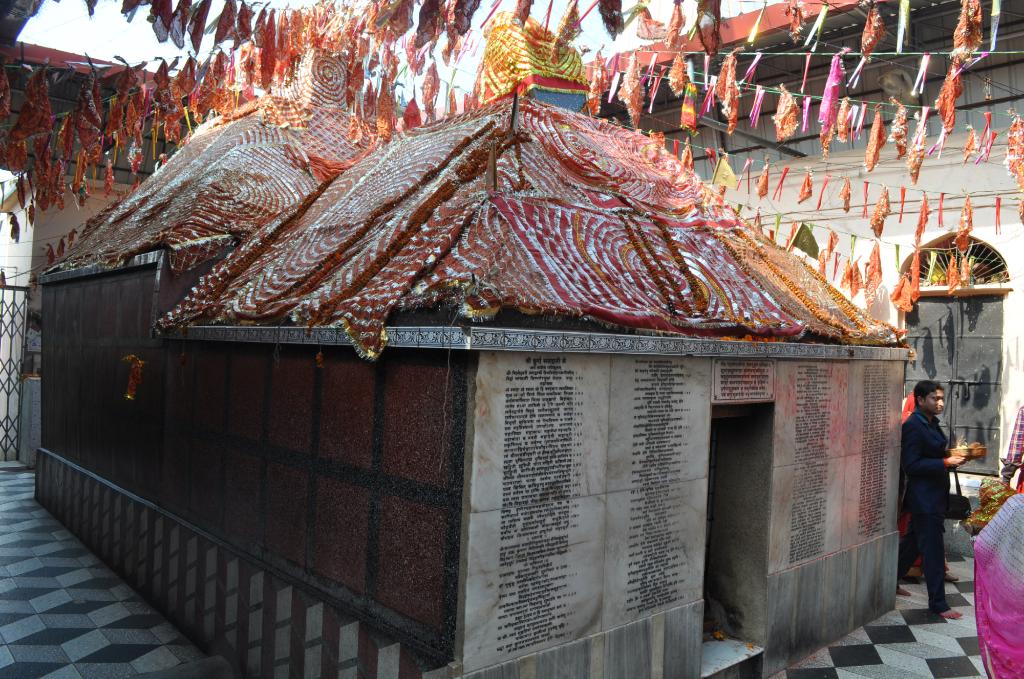Inside Temple

The Mangla Gauri Temple in Gaya, Bihar, houses a revered idol of Goddess Mangla Gauri, a form of Goddess Durga. The temple, located atop a hill, is one of the 18 Shakti Peethas, which are sacred sites where the body parts of Goddess Sati are believed to have fallen. Inside the temple, the idol of the goddess is adorned with a crown and a traditional saree, exuding divine energy and grace. Goddess Mangla Gauri is depicted as a benevolent deity, offering blessings of fertility, prosperity, and peace. The atmosphere inside the temple is serene and devotional, with the sounds of chanting and the fragrance of incense filling the air. Devotees gather to offer prayers, especially during the auspicious Navratri festival, when the temple sees a significant influx of pilgrims. Many women visit the temple, seeking blessings for the well-being of their families and children. The inner sanctum of the temple is simple yet spiritually powerful, with a sense of tranquility that helps devotees connect deeply with the divine. The temple’s historical and mythological significance adds to its allure, making it not only a place of worship but also a symbol of cultural and spiritual heritage for the people of Bihar.
Other Attractions
In addition to the Mangla Gauri Temple, Gaya, Bihar, is home to several other attractions that make it a significant cultural and religious hub. One of the most famous is the Vishnupad Temple, dedicated to Lord Vishnu, which is located near the banks of the Falgu River. It is believed to be the site where Lord Vishnu’s footprints are imprinted on a stone, making it an important pilgrimage destination. The Bodhi Tree and Mahabodhi Temple in Bodh Gaya, a short distance from Gaya, are globally renowned as the place where Lord Buddha attained enlightenment. The Mahabodhi Temple, a UNESCO World Heritage Site, attracts thousands of Buddhist pilgrims every year. Another notable attraction is the Barabar Caves, located about 24 kilometers from Gaya. These ancient rock-cut caves, dating back to the Mauryan period, are famous for their remarkable architecture and inscriptions.

Distance From
Gaya Railway Station
The distance from Gaya Railway Station to Mangla Gauri Temple is approx 15 kilometers.

Gaya Airport
The distance from Gaya Bus Stand to Mangla Gauri Temple is approximately 8 kilometers.

Gaya Bus Stand
The distance from Gaya Airport to Mangla Gauri Temple is approximately 12 kilometers.

Our Review
Our visit to the Mangla Gauri Temple in Gaya, Bihar, was a truly spiritual experience. The temple, located atop a hill, offers a serene and peaceful environment that instantly connects you with the divine. The climb up the 108 steps, though steep, is a spiritually enriching journey, each step symbolizing overcoming life's challenges. The temple's architecture is simple yet elegant, with the idol of Goddess Mangla Gauri exuding a sense of grace and benevolence. The atmosphere inside the temple is calm and filled with devotion, as devotees offer prayers for prosperity, fertility, and peace. The fragrance of incense and the sound of prayers create a tranquil ambiance, making it a perfect place for meditation and reflection. Visiting the temple during the Navratri festival was particularly special, with a vibrant yet serene energy surrounding the temple. Overall, the Mangla Gauri Temple offers a deeply spiritual and fulfilling experience.
